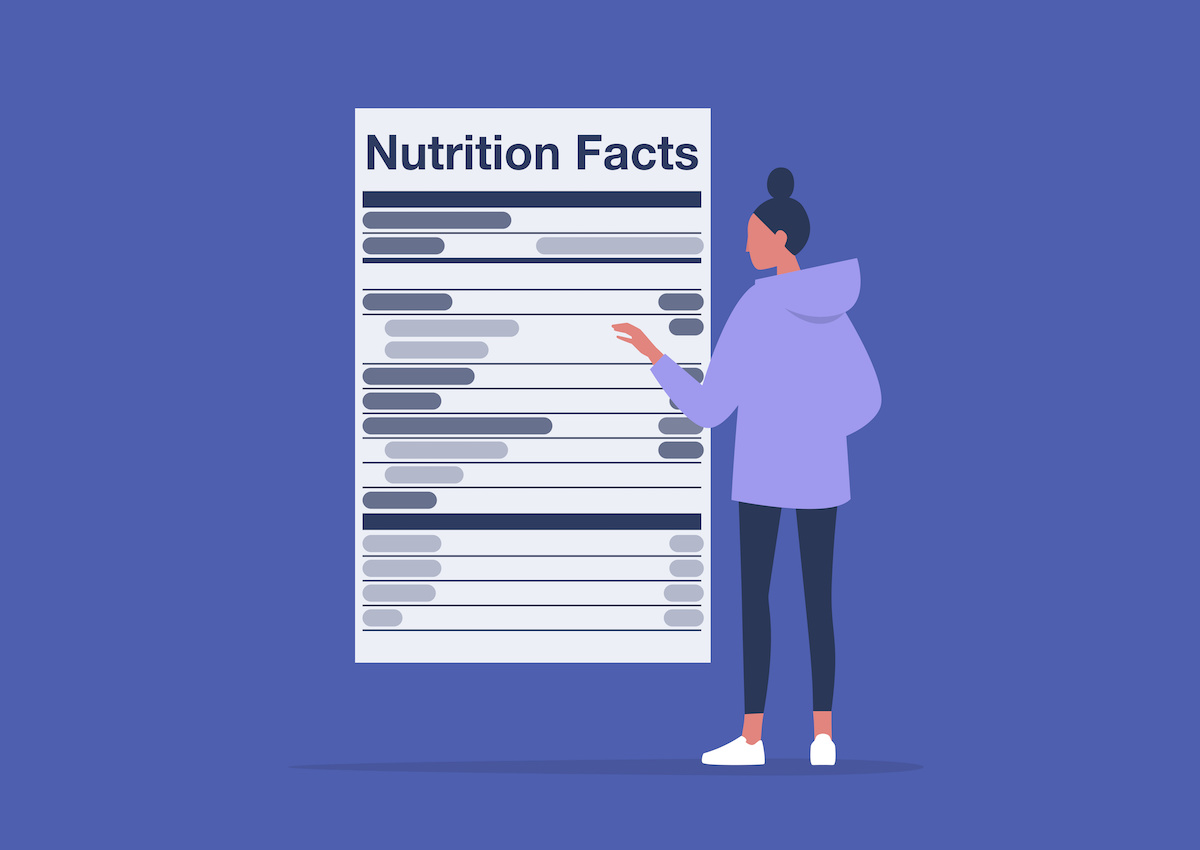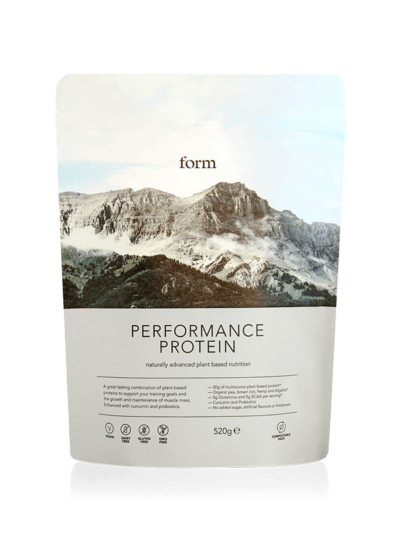A Scientific Breakdown: Why Calorie Counting Is Meaningless

For over a century, energy balance has remained one of the fundamental principles in nutrition; an extension of the first law of thermodynamics. “Energy cannot be created nor destroyed”.
In simple terms, it describes a balance (or difference) between energy consumed and energy expended. I say energy, but for most people, this translates as calories, the familiar unit of energy.
Most of us see the concept of energy balance used in the context of weight gain and weight loss, the logic being that if you eat more than you burn then you will gain weight and vice versa. This whole concept has formed the basis of calorie counting approaches to dieting and the more recent use of calorie counting in smartphone apps and other smart devices.
However, it is important to understand the points at which counting calories can become inaccurate, let alone how meaningful it is as a concept.
The Problems With Calorie Counting
The aim is to quantify how many calories we are gaining from a particular meal, but the first challenge is to accurately record what was eaten and how much. This is not always as easy as it seems. Even with the advent of technology, people tend to underestimate how much they eat.
This could be conscious – omitting foods or downplaying portion size – or unconscious – forgetting some foods and drinks, or not appreciating the overall portion eaten. It’s an inherent problem with self-reported intake, not helped by the fact that our “standard” portion sizes are likely out of date, and that perception of eaten portion size is often warped.
But even if you assume an accurate record of the type and amount of food consumed, the next challenge is actually matching it to the known calorie content of those foods. Data does not exist for all foods and not all foods have their nutritional composition on the label. Even the data that does exist is not necessarily reflective of what was eaten, with differences in brands, processing, farming, country of origin, season and freshness all impacting the actual composition.

Not All Energy Is Absorbed
Then there’s the fact that not all energy content on the food label is actually absorbed. What these numbers try to quantify is what we call the “metabolizable energy” from food. This energy is not actually measured in a lab but calculated knowing how much of the energy giving components (fat, alcohol, protein, and carbohydrate) are in that food.
To translate these components, we use what are known as Atwater factors – a method derived nearly 100 years ago – which determines fat at 9kcal/gram, alcohol at 7kcal/gram, protein at 4kcal/gram and carbohydrate at 4kcal/gram. It shouldn’t surprise you that these are not fail-proof, because the amount of energy absorbed still depends on the matrix and digestibility of that food.
But more questionable is the concept of metabolizable energy itself. No matter how good your Atwater factors are, metabolizable energy does not give you a true depiction of the calories gained from that food, because there is a certain energy cost to digesting, absorbing and transporting the components of that food. This is collectively called the thermic effect of feeding (TEF), or diet-induced thermogenesis (DIT).
Strictly speaking, this is part of your energy expenditure, and so belongs on the other side of the energy balance equation. Nevertheless, it’s worth mentioning here because it is the reason why several commentators coin the phrase “a calorie is not a calorie”.

Working Out Energy Expenditure
Most just think about calorie counting in terms of what is going in, but what is expended is just as important. Energy expenditure can be split into three main components – namely metabolic rate, physical activity, and thermogenesis. Metabolic rate effectively represents the calories you burn lying at rest, in a fasted state, doing absolutely nothing. For most people, it accounts for 60-70 percent of total energy expenditure, but it can be more closely measured using weight, age, and gender as the three main determinants.
Physical Activity
Physical activity is by far the most variable component of energy expenditure, and one of the most difficult to measure. Energy cost of any physical activity is expressed as a multiple of your metabolic rate. In this way, you can either look at individual activities or exercise separately as an energy cost multiple. For example walking is three times metabolic rate, running is six times metabolic rate and so on. There are compendiums of energy costs expressed in this way for a whole host of activities.
Alternatively, you can try to gauge what the overall energy cost of physical activity is across a whole 24-hour period. You could do this either by directly measuring energy expenditure or by measuring something that reflects activity such as movement or heart rate, which can then be translated into energy. Direct measurement of energy is more accurate but is difficult to do in free-living people, whereas predictions based on accelerometry (movement) and heart rate requires the use of equations based on several assumptions.
Thermogenesis
The third component, thermogenesis, is the energy cost of digesting, absorbing and transporting food. This is often not in itself measured but rather just assumed to be a fixed proportion of the total – typically +10 percent. But, the amount of DIT is different for different food components. The energy cost of protein, for example, can be up to 25 percent of the energy in that protein. Alcohol could be 10 percent (female) or 20 percent (male). Fibre 10-15 percent with other carbohydrates and fat much lower at less than 5 percent.
Hence diet composition influences net energy gain from food. In a way this relates to the second law of thermodynamics; a lesser known law that says although energy cannot be created or destroyed, converting it from one form to another is not always efficient. Energy is ‘lost’ through entropy, mostly as heat. Similarly, when you digest some foods you generate more heat than others.
But does this really make a big difference? No, because DIT is already factored into the energy expenditure and also because, although a high protein or high fibre diet may maximise your DIT, it is still only going to introduce a very minor overestimation of “net” energy intake.

A Conclusion On Calorie Counting
Energy intake is notoriously difficult to quantify. There are sources of error across the whole process, from recording the food to matching it to composition data to how accurate and representative this data is.
For energy expenditure, we can measure metabolic rate in a lab to perhaps 2-3 percent accuracy (say 20-50kcal/day). On an individual basis, differences between measured and predicted metabolic rate can be 100kcal/day or more. The accuracy of measuring DIT Is pretty good at say 1-2 percent, but we know the main influence on DIT is diet composition. That said, we also observe differences in DIT between people given the same meal, which again can add up to 100kcal or more.
For physical activity, it is difficult to quantify how accurate measurements are. The gold standard of measuring total energy expenditure is the Doubly Labelled Water (DLW) method, and measures of physical activity like accelerometry and heart rate used in combination with metabolic rate agree well with measured energy expenditure by DLW. However, DLW itself only has an accuracy of 5-10 percent (or +/- 100-300kcal/day).
The Overall Margin For Error
Put together you are probably looking at measuring energy balance to an accuracy – at best – within 100kcal/day. This may sound pretty good, but you need to put this in context to how energy balance operates. When observing populations over decades, such as in the Framingham Heart Study, on average people tend to maintain weight to within about ½ kg per year. If you assume (for this argument at least) that 1kg of weight contains around 31MJ of energy (or 7500kcal), then ½ kg would be 3750kcal.
This is equivalent to 10kcal/day. Now, this is absolutely for illustrative purposes only, and in no way explains the dynamic and complex nature of energy equilibrium and weight maintenance. To understand this requires significantly further education, but it does add to the difficulties of calorie counting and the laborious and meaningless process of quantifying calories in and calories out.
Sources
The use of a food logging app in the naturalistic setting fails to provide accurate measurements of nutrients and poses usability challenges | Nutrition, 2019
The relative validity of a food record using the smartphone application MyFitnessPal | Nutrition & Dietetics, 2018
Comparative accuracy of fitness tracking modalities in quantifying energy expenditure | Journal of Medical Engineering & Technology, 2016
Adaptive thermogenesis in human body weight regulation: more of a concept than a measurable entity? | Obesity Review, 2012
Measurement of energy expenditure | Public Health Nutrition, 2005

















